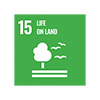Waste management
We work to minimise the impact of the mineral and non-mineral waste our activities produce. We focus on the need to store waste safely, particularly mineral waste and tailings.
Our approach
Most of the waste our activities generate is waste rock and residues from our production processes. Our industrial assets are expected to ensure the responsible management of our mineral wastes and implement systems to responsibly manage and dispose of all our non-mineral wastes.
Where possible, we encourage the reuse of waste rock and other types of mineral waste to reduce our operational footprint, such as in backfilling mines and building roads.
We assess the hazards of waste from our activities in accordance with relevant regulatory systems and international industry practices and seek to manage their reuse, recycling or disposal in a safe and responsible manner.
Our metal and coal assets generate tailings (residues of mineral processing), which are stored in purpose-built tailings storage facilities. Further information on approach to tailings management is available on our tailings page.
Mineral wastes
Most of the waste Glencore generates is mineral waste and includes tailings, slag and waste rock.
The design, construction, operation and closure of our waste storage facilities must adhere to the requirements of environmental assessments and government approvals. These are conducted and received prior to the start of new operations and must be maintained throughout the life of an industrial asset.
In addition, throughout an industrial asset’s lifecycle it undertakes monitoring of the environmental conditions of waste storage facilities and reports the data to regulators. We reuse inert waste, for example, where possible, we use waste rock to backfill our mines, and fill roads with non-hazardous mineral wastes.
A potential risk associated with waste rock dumps and tailings storage is acid rock drainage (ARD). While not present in every rock type, ARD can occur from the exposure of certain types of rock, particularly those containing sulphide, to oxygen and water leading to the formation of atmospheric sulphuric acid. This has the potential to leach heavy metals (such as lead, zinc and cadmium) from the ore in the waste rock. Geochemical assessments are conducted on our waste rock to inform the design of our storage facilities as we seek to minimise long-term potential impacts. We also conduct routine monitoring.
Industrial assets take measures to mitigate the risk of ARD via a number of waste management processes, including:
- segregating non-acid generating and potentially acid generating rock types;
- encouraging efficient mining practices to reduce the volume of waste rock; and
- capping waste rock dumps to reduce contact with air, precipitation and sensitive water bodies.
The effectiveness of these design and management controls are monitored and updated to support the management and mitigation of potential impacts.
Principles we follow
-
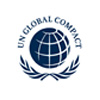 UN Global CompactVisit the website
UN Global CompactVisit the website -
 Principle 7Visit the website
Principle 7Visit the websitebusinesses should support a precautionary approach to environmental challenges
-

-
 Principle 9Visit the website
Principle 9Visit the websiteencourage the development and diffusion of environmentally friendly technologies
-
ICMMVisit the website
-
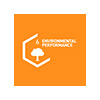
-
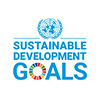 UN SD GoalsVisit the website
UN SD GoalsVisit the website -
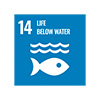
-
